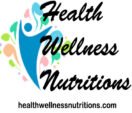When we talk about health, most people think of individual choices—what we eat, how much we exercise, or when we visit the doctor. But there’s another side to health that affects us all: public and community health. This area focuses not only on individual well-being but also on the collective health of neighborhoods, cities, and even entire nations.
Public health is about prevention as much as treatment. Instead of waiting until people get sick, it aims to stop illnesses before they begin. Clean water, vaccination programs, proper waste management, and accessible health education are all examples of how public health saves lives every day.
Community health takes this idea one step closer to home. It looks at the unique needs of specific groups—whether that’s a rural town, a busy city, or a school community—and finds ways to improve their quality of life. This can include mobile health clinics, local fitness initiatives, mental health awareness campaigns, or nutrition programs for children.
Why is this important? Because no matter how healthy one person may be, we are all connected. A polluted environment, lack of access to healthcare, or the spread of infectious disease can affect entire populations. Strong public and community health systems make sure everyone has a fair chance at living a safe and healthy life.
Every individual can play a role too. Small actions—like practicing proper hygiene, participating in vaccination drives, supporting local health initiatives, or simply sharing accurate health information—contribute to stronger, healthier communities.
In the end, public and community health remind us of a simple truth: well-being is not just personal, it’s collective. When communities thrive, individuals thrive too. By working together, we can build a healthier, more resilient future for everyone.
